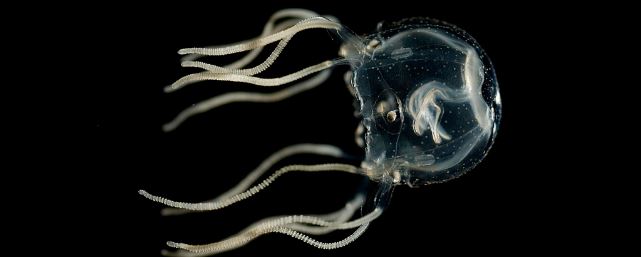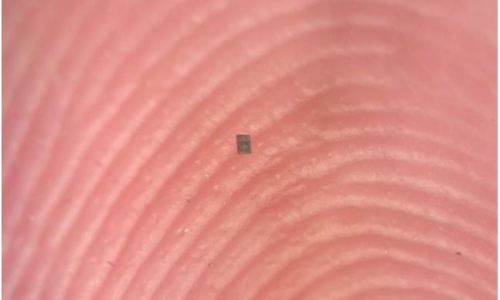


 3:26:49
3:26:49  2023-09-23
2023-09-23  1345
1345

In what could be excused as a dictionary definition of futility, scientists have tried to teach a species of boxed jellyfish (Tripedalia cystophora) a few simple tricks to test whether learning necessitates a brain.
Don't expect to see 'The Amazing Ball-Juggling Cnidarians and Friends' variety hour on your next trip to Seaworld. This isn't a story about secretly genius jellies.
But the findings do suggest that virtually anything with a handful of neurons and a way to sense their environment can adapt their behavior based on prior experience.
"Learning is the pinnacle performance for nervous systems," says first author Jan Bielecki, a neurobiologist from Kiel University in Germany.
But just what kind of nervous system are we talking about here? Octopuses manage incredibly well without centralized lumps of gray matter, solving problems via a network of around half a billion neurons spread throughout their limbs.
Even the humble sea slug Aplysia californica has shown it is more than capable of learning with a mere 20,000 nerve cells.
As far as jellyfish go, T. cystophora isn't a complete dunce. Each of its four vision-structures, or rhopalia, comprise of two eyes and around a thousand-odd photoreceptors.
These nerves serve as both sensory systems and integration centers for turning stimuli into responses, helping the box jellyfish pulse their way through dense forests of mangrove roots in search of prey.
To determine whether such a rudimentary system of jellyfish-see-jellyfish-do can still learn, Bielecki and his colleagues popped adult specimens of T. cystophora into a round tank with gray striped walls to mimic the vertical bars of a distant mangrove. Seeing only its freedom, the jellyfish naturally bobbed its way into the wall without a second thought.
It didn't take long for their enthusiasm to wane. By the end of the 7.5 minutes trial the jellyfish were pivoting four times as often on average, and increasing the distance between tiself and the wall by half. This reflects altered behavior in response to the jelly's new-found obstacle.
"It's surprising how fast these animals learn; it's about the same pace as advanced animals are doing," says University of Copenhagen marine biologist, Anders Garm.
"Even the simplest nervous system seems to be able to do advanced learning, and this might turn out to be an extremely fundamental cellular mechanism invented at the dawn of the evolution nervous system."
To confirm that this learning event involved visual and mechanical stimuli, the researchers isolated individual jellyfish rhopalia and presented them with a simple movie consisting of low-contrast gray stripes in motion.
Interpreting the stripes as objects too distant to matter, the jellyfish organs lazily did nothing. When the movie was accompanied by a weak jolt of electricity, the rhopalia no longer saw the fake mangrove roots as so distant, prompting them to furiously pump out the signals for movement to 'dodge' the oncoming obstacle.
Knowing it takes so few neurons and the simplest of stimuli to promote associative learning in an animal, the researchers hope to explore the interactions of nerves on a cellular level.
Reality Of Islam |
|

Some 1.2 bi

A tiny robo

By applying
 9:3:43
9:3:43
 2018-11-05
2018-11-05
10 benefits of Marriage in Islam
 7:5:22
7:5:22
 2019-04-08
2019-04-08
benefits of reciting surat yunus, hud &
 9:45:7
9:45:7
 2018-12-24
2018-12-24
advantages & disadvantages of divorce
 11:35:12
11:35:12
 2018-06-10
2018-06-10
 6:0:51
6:0:51
 2018-10-16
2018-10-16
the happy life of mankind requirement
 6:36:36
6:36:36
 2022-01-25
2022-01-25
 1:34:8
1:34:8
 2022-02-01
2022-02-01
 9:39:36
9:39:36
 2022-12-28
2022-12-28
 6:14:3
6:14:3
 2023-01-18
2023-01-18
 7:32:24
7:32:24
 2022-02-14
2022-02-14
 8:15:37
8:15:37
 2023-02-16
2023-02-16
 1:38:41
1:38:41
 2021-12-08
2021-12-08
 5:41:46
5:41:46
 2023-03-18
2023-03-18
| LATEST |